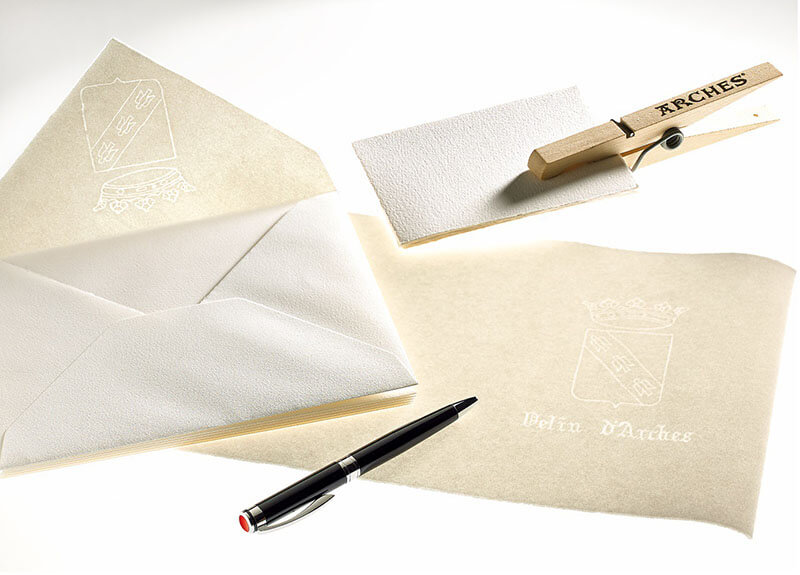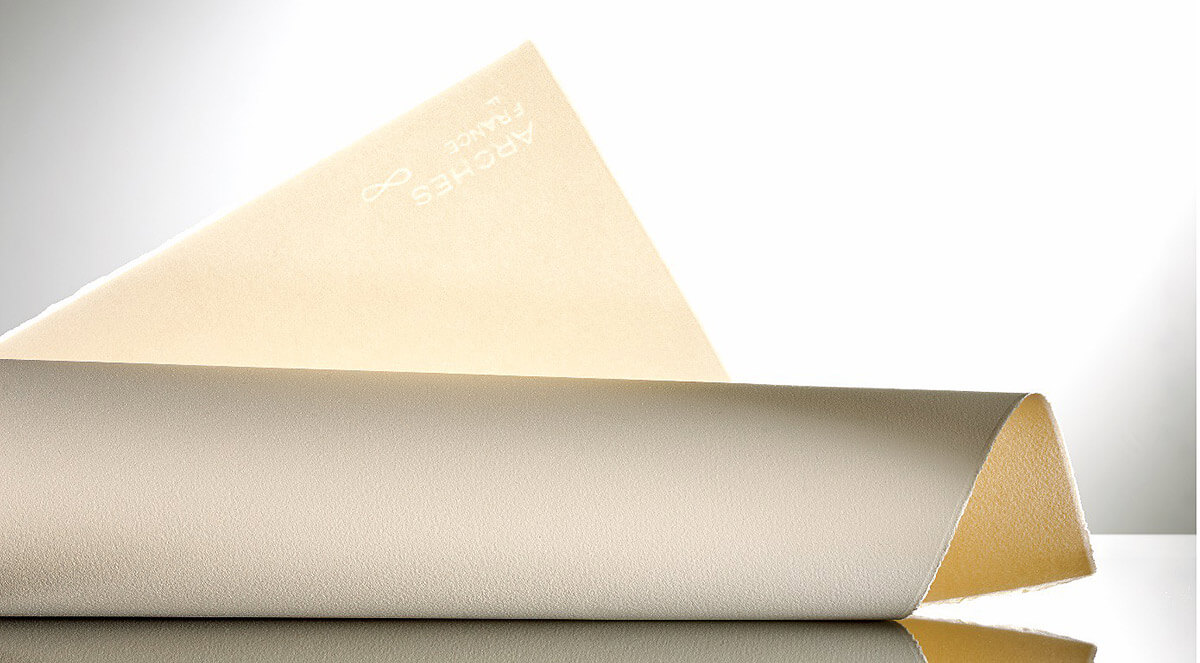Velin d’ARCHES® paper
Velin d’ARCHES® is a superior quality 100% cotton wove paper emblematic of the ARCHES® range and the undisputed paper of choice in the art world. Made on a cylinder mould using carefully selected cotton linters which give it a sensual feel as well as excellent mechanical strength, its surface offers a smooth, even grain similar to that of handmade papers. It is used in art publishing for different artistic and creative techniques such as gravure printing, lithography, screen printing, letterpress and collotype printing, among others.
It is often used for luxury creations. Its smooth texture combined with good ink absorption make it the ideal medium for delicate artwork and high-quality printing. It also lends itself perfectly to numerous other techniques including blind embossing, bookbinding and hot foil stamping.
Velin d’ARCHES® paper is also suitable for various drawing techniques: graphite, charcoal, sanguine crayon, pencil, felt pen or pastel. Its markedly fine grain is ideal for academic drawing. It allows the artist to play with the surface to obtain relief effects. It is erasable without leaving marks or linting.

What is wove paper?
Wove paper, known as “velin” in French, is a very flexible paper, soft and silky to the touch, which has the particularity of being free of laid lines and chain lines, unlike laid paper.
Silky-textured wove paper first appeared around 1770, and its French name comes from a Latin word, vellum, meaning calf. Vellum or vélin in French came to mean a luxury parchment originally made from the skin of stillborn calves. Their skin is perfectly smooth and even. This wove paper therefore takes its French name, Velin, from its visual resemblance to this type of manuscript paper. Originally, due to its high cost, it was largely used by the nobility of the day for printing luxury items such as invitations and announcement cards.
To this day ARCHES® still sells a prestige French-style announcement card made of Velin d’ARCHES® paper in natural white, the original colour traditionally used for these cards. The small 250 gsm deckle edged card comes with its own watermarked envelope.

The “Velin” name evokes the tradition of luxury parchment, and Velin d’ARCHES® paper perpetuates that timeless elegance.
History of wove paper
The invention of wove paper, around 1750, is attributed to two Englishmen, John Baskerville and James Whatman. They were looking to eliminate laid lines, but also to make a smoother paper better suited to writing and printing. They used a paper machine with an extremely fine wire mesh to create a smooth paper with no visible lines. Between 1754 and 1757, paper maker James Whatman perfected the process to achieve what we now call wove or Velin paper, which was better suited to lighter, finer print type, at the request of Baskerville, a printer and caster of printing blocks who had just designed the Baskerville typeface, one of the Transitional family of typefaces.
Wove paper was then perfected in France by Étienne Montgolfier in 1777, then in 1780 by François-Ambroise Didot with paper makers Johannot d’Annonay. It was Benjamin Franklin (1706-1790), a printer by trade, who is thought to have introduced them to the English paper makers’ machine when he was living in France between 1776 and 1785 serving as the ambassador of the fledgling United States of America.





